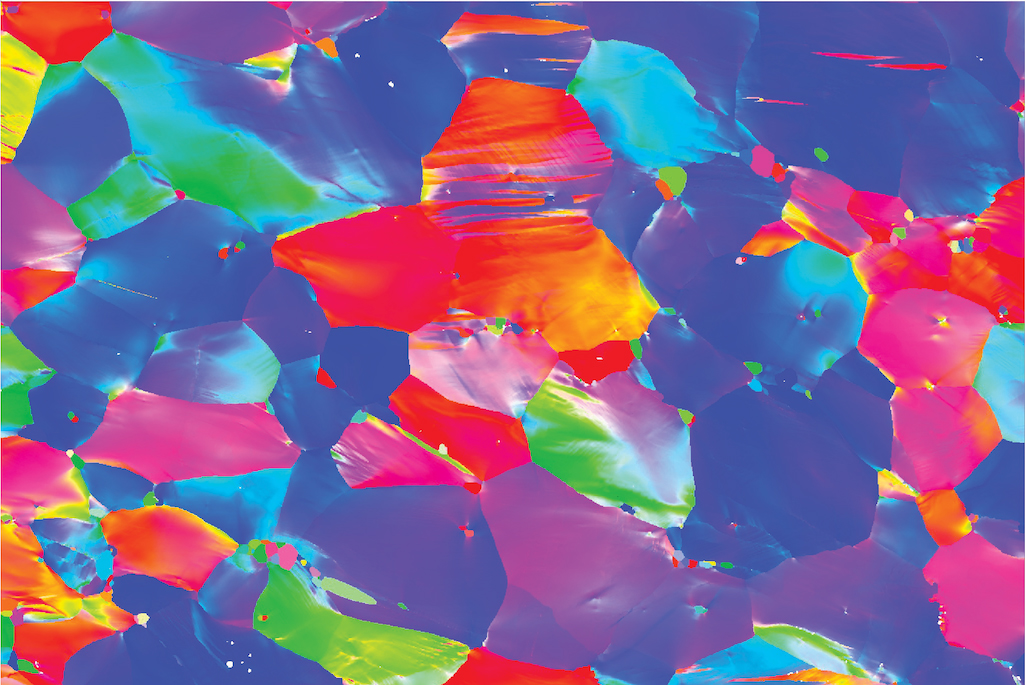2024-04-22 ローレンス・バークレー国立研究所
研究者たちは、合金の結晶が原子レベルでキンク(曲がる)することによって、極端な温度でも割れない驚くべき金属合金を発見した。 Researchers have uncovered a remarkable metal alloy that won’t crack at extreme temperatures due to kinking, or bending, of crystals in the alloy at the atomic level

A map of the crystal structure of the alloy made with electron backscatter diffraction in a scanning electron microscope. Each color represents a section of the crystal where the repeating structure changes its 3D orientation. Credit: Berkeley Lab
<関連情報>
- https://newscenter.lbl.gov/2024/04/22/this-alloy-is-kinky/
- https://www.science.org/doi/10.1126/science.adn2428
キンクバンドがNbTaTiHf耐火中エントロピー合金の優れた耐破壊性を促進する Kink bands promote exceptional fracture resistance in a NbTaTiHf refractory medium-entropy alloy
DAVID H. COOK, PUNIT KUMAR, MADELYN I. PAYNE, CALVIN H. BELCHER, […], AND ROBERT O. RITCHIE
Science Published:11 Apr 2024
DOI:https://doi.org/10.1126/science.adn2428
Editor’s summary
Refractory alloys are very resistant to heat and wear but are not ductile or resistant to fracture. Cook et al. discovered a refractory alloy composed of niobium, molybdenum, tantalum, and hafnium that is an exception to the general trend. Because this alloy forms kink bands, in which crystal rotation accommodates strain, the fracture toughness is greatly enhanced. The high fracture toughness extends from cryogenic conditions up to very high temperatures, making the alloy attractive for applications across a wide temperature range. —Brent Grocholski
Abstract
Single-phase body-centered cubic (bcc) refractory medium- or high-entropy alloys can retain compressive strength at elevated temperatures but suffer from extremely low tensile ductility and fracture toughness. We examined the strength and fracture toughness of a bcc refractory alloy, NbTaTiHf, from 77 to 1473 kelvin. This alloy’s behavior differed from that of comparable systems by having fracture toughness over 253 MPa·m1/2, which we attribute to a dynamic competition between screw and edge dislocations in controlling the plasticity at a crack tip. Whereas the glide and intersection of screw and mixed dislocations promotes strain hardening controlling uniform deformation, the coordinated slip of <111> edge dislocations with {110} and {112} glide planes prolongs nonuniform strain through formation of kink bands. These bands suppress strain hardening by reorienting microscale bands of the crystal along directions of higher resolved shear stress and continually nucleate to accommodate localized strain and distribute damage away from a crack tip.



